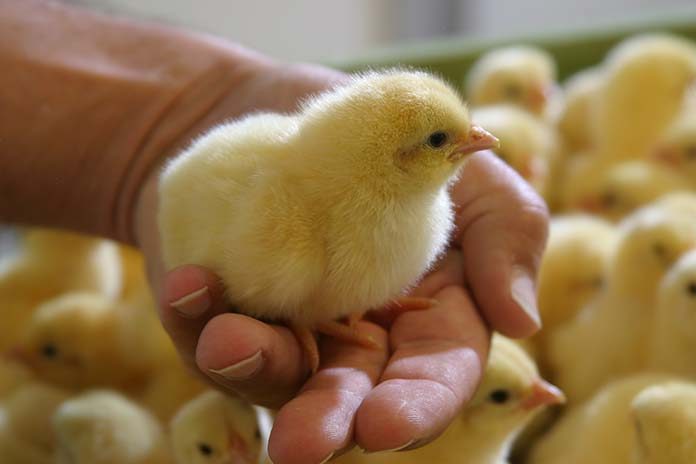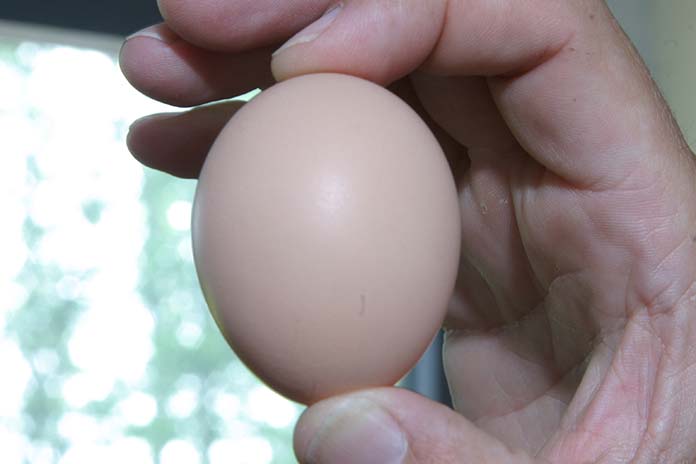
Hatching for egg quality implies caring of various factors. The age of the flock, number of storage days and incubation program are typically included in the analysis and optimization of hatchery results, but very often, insufficient attention is paid to the quality of the hatching eggs. While external quality is usually considered, there is much debate regarding internal quality control on a regular basis.
Egg quality in the broadest sense has been affected by genetic selection, for production traits like growth, feed conversion, number of eggs and egg shell quality. Breeding companies generally pay less attention to egg parameters related to hatchability and chick quality, which has led to increasing variability between batches of hatching eggs.
Ongoing research shows that genetic selection for production traits makes high demands of breeder management with respect to feed composition and feed restriction management. Genetic selection has influenced egg size, the yolk:albumen ratio and shell quality. Feed restriction management influences the development of the reproductive tract and the nutrients available to the growing embryo from yolk and albumen. In addition, with the management of breeders becoming more complicated, the risk of stress, aggressive males and overcrowding has increased with inherent consequences for egg (embryo) quality.
In conclusion, if specific protocols for optimizing incubation management are used, it is necessary to evaluate hatching egg quality on a routine basis. A brief summary of internal and external parameters is presented hereafter.

Egg shape
A good quality hatching egg has a blunt side containing a small air cell and a clearly recognizable sharp end. Too many abnormal, or misshapen eggs signifies immaturity of the shell gland, young parent stock, disease, stress and overcrowding in the flock.
Egg shell
High quality hatching egg shells are smooth, without ridges or small lumps of calcified material (pimples). The colour of eggs within a batch is uniform. Young flocks produce eggs with thicker shells and when the flock ages, the shell becomes thinner and the incidence of abnormal shells increases. Insufficient calcium or vitamin D3 content in feed will produce thin egg shells. Saline drinking water and high levels of chlorine will also cause shell quality problems. Abnormal white, thinshelled eggs may indicate a variety of diseases (IB, NCD, EDS).
Albumen
Good quality hatching eggs contain a higher proportion of thick, viscous albumen with less thin albumen. The volume of thick albumen reduces with increased flock age and after storage. Good quality albumen is translucent with a greenish or yellow cast indicating the presence of riboflavin. Meat or blood spots point to stress or overcrowding in the flock.
Yolk
The size of the yolk increases with flock age and thus the ratio of yolk to albumen increases. In good quality hatching eggs, the yolk has a uniform colour without any blood or meat spot. Mottled yolk points to stress in the flock.
Embryo
The embryo floats on top of the yolk. In the un-incubated egg, the embryo is visible as a doughnutlike opaque ring with a translucent centre. A good quality embryo is 35 mm in diameter.
Advice
- Do not take egg quality for granted when optimizing hatchery
- Use specific egg quality forms to record the quality of each batch of eggs received at the hatchery.
- Record the number of good quality eggs and the number of eggs not fulfilling required standards for every batch of eggs
- Take a minimum sample of 10 eggs to record the quality of the embryo, albumen and
- Communicate openly with your egg supplier regarding egg quality, with the mutual aim of improving and/or maintaining quality.
For information contact: www.pasreform.com

















